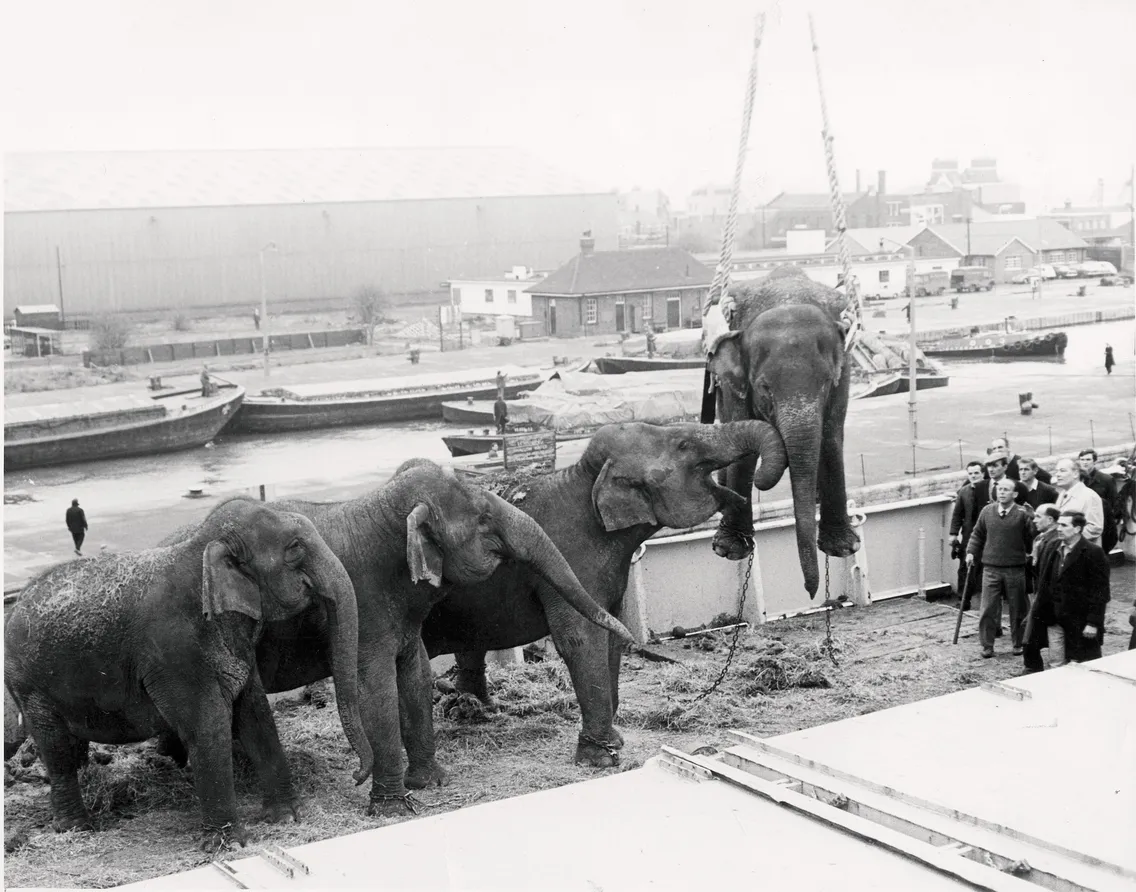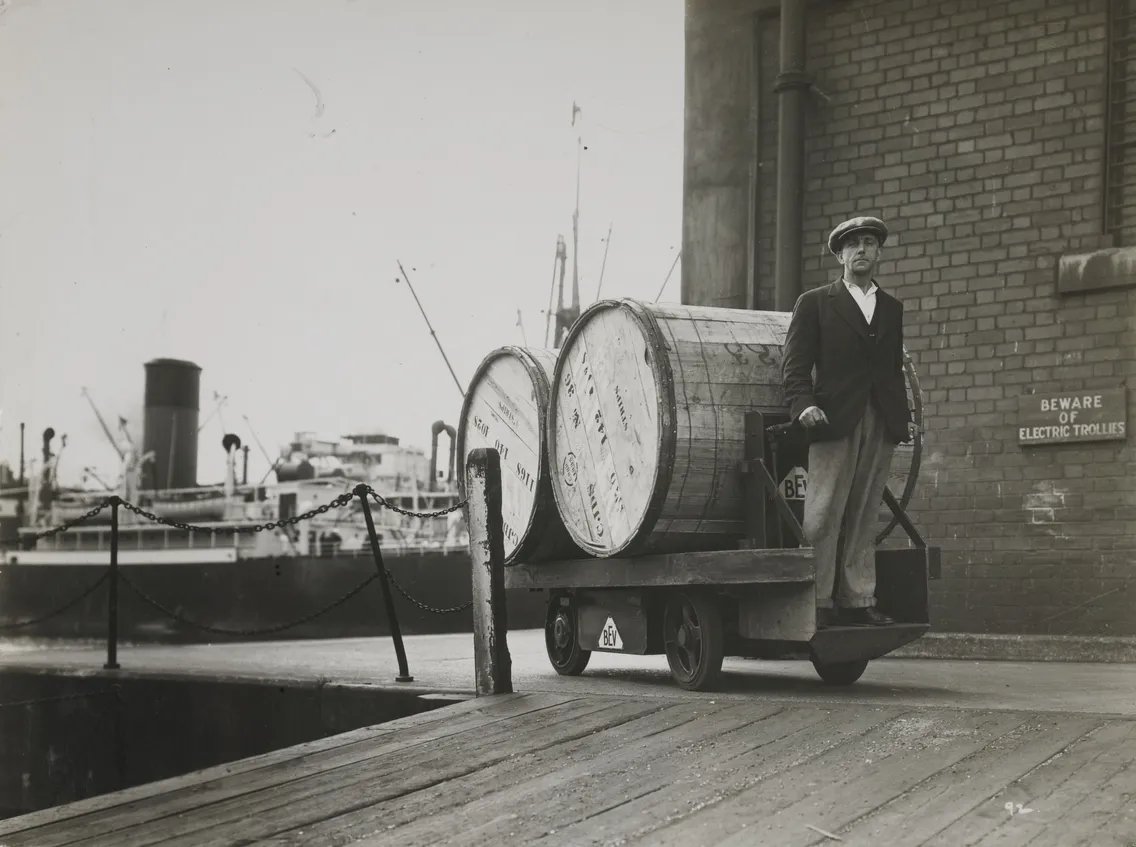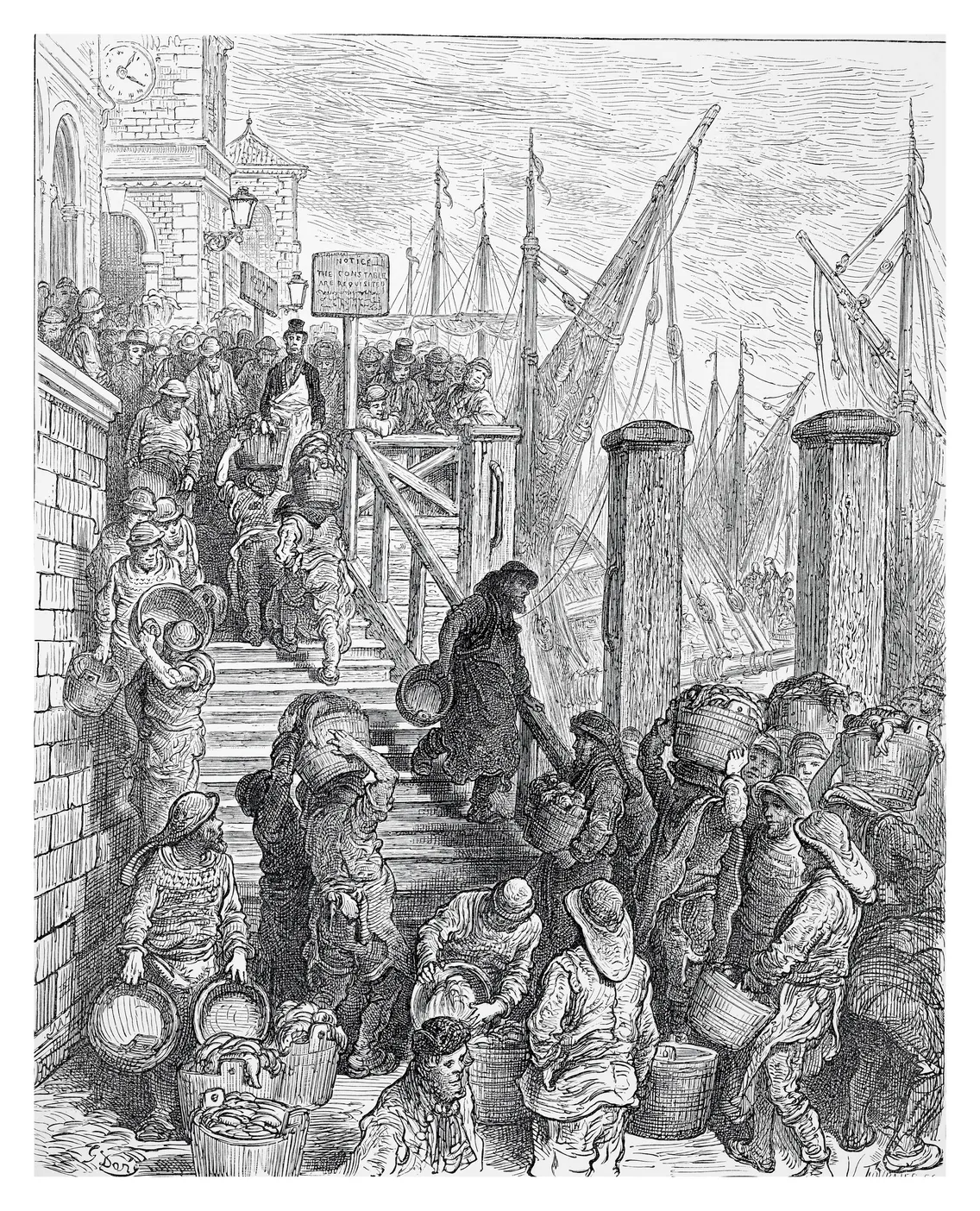02 September 2016 — By James Read
From fish market to red carpet: London's changing docks
London’s Docklands have gone through huge change in the last 70 years – from being one of the busiest ports in the world, to falling into disuse as cargo ships outgrew the Thames.
Docklands has seen vast industries come and go – you no longer see thousands of stevedores unloading cargo ships, or exotic animals on the quayside. We've documented two of the attempts to replace those lost industries with urban regeneration. The same warehouse that once stored tonnes of tobacco is now a dance floor, and what was once a 900-year-old fish market now hosts film premieres.
“‘Queen’s Pipe’ was used to burn any goods on which tax wasn’t paid – on one occasion ‘45,000 pairs of French gloves’ were reportedly burnt here”
Tobacco Dock and video game conventions
The Tobacco Dock was built in 1811 in response to the burgeoning trade demands of the British empire. It is a huge warehouse, and was initially used to store the tonnes of tobacco imported from newly independent Virginia. It could store up to 13,000 metric tonnes awaiting payment of duty, with room for 8 million gallons of wine in the vaults underneath. In one corner was a furnace named the ‘Queen’s Pipe’, which was used to burn any goods on which tax wasn’t paid – on one occasion “45,000 pairs of French gloves” were reportedly burnt here.
As London’s shipping trade declined in the 20th century, though, the dock fell out of use. In 1989, it was bought and remodelled into a shopping mall by architect Sir Terry Farrell. Since it was Grade I-listed, all its glorious, original furnishings remained, with retail plots fitted in between the arched brick vaults. Unfortunately neither London’s transport network nor housing developers had quite reached Wapping, and the flow of customers was almost non-existent.
By 1995 only a single restaurant and a sandwich bar remained, both serving the employees of News International, which had moved its headquarters to Docklands in 1986. The sandwich shop, Frank & Steins, remarkably limped on until 2008.
In 2012 it was used to house soldiers, who were deployed to help provide security for the Olympic Games after contractor G4S was found to be chronically understaffed. Since it has hosted events ranging from acid house raves to video game conventions.
Rolling out the red carpet at Billingsgate Fish Market
As one industry moved out of the Docklands, another moved in. Old Billingsgate Market was one of London’s oldest, established by royal charter at the beginning of the 15th century. Two hundred years later, a parliamentary Act was passed making the market fish-only – though eels could not be sold, as this privilege was given to Dutch fisherman on the Thames who had fed Londoners after the Great Fire (this is now rescinded and you can buy eels as you please).
Relocation and repurposing of the market
The market was originally sited on Lower Thames Street, just east of London Bridge, which was well-placed for merchant ships as they became too large to fit any further down the river.
As Lower Thames Street was widened in the 1970s to allow for more street traffic, the market needed to find a new home. In 1982, it was relocated to the Docklands on the Isle of Dogs, where the last of the docks had just closed, but long before the rise of the Canary Wharf skyscrapers. The land was purchased by the Borough of Tower Hamlets, and leased to the City of London Corporation for a nominal rent paid in fish.
And Old Billingsgate Market? It’s now used for film premieres and awards dinners.
You can find out more about the extraordinary changes that have transformed London's Docklands at the London Museum Docklands.







